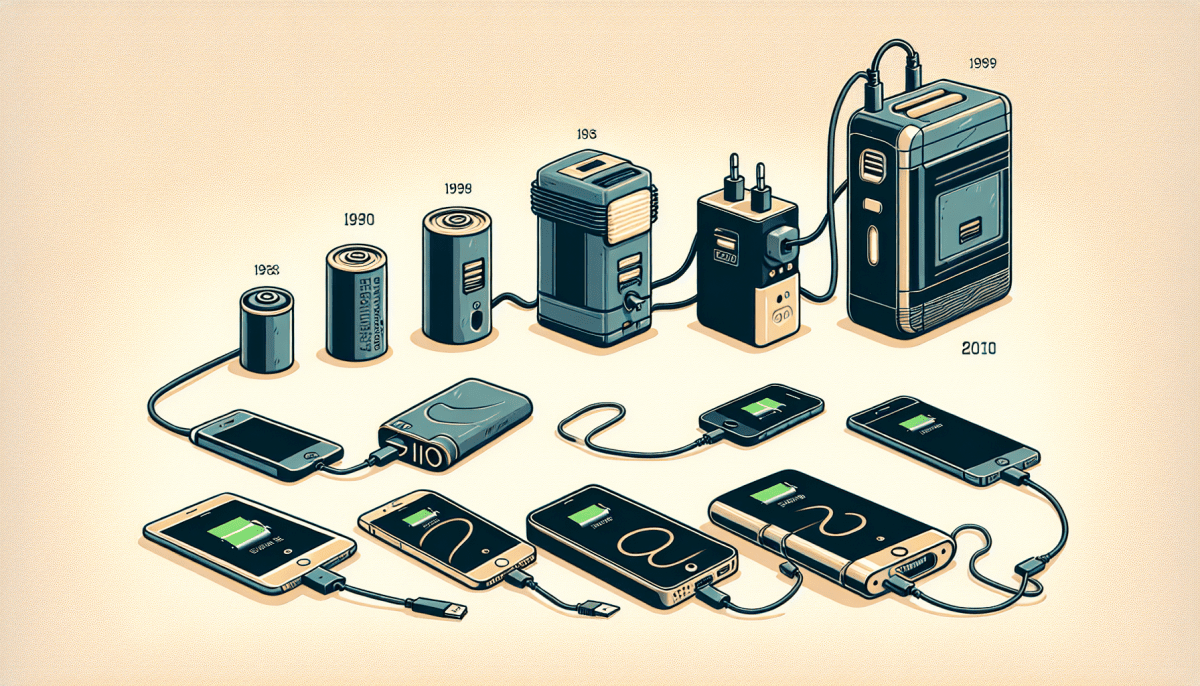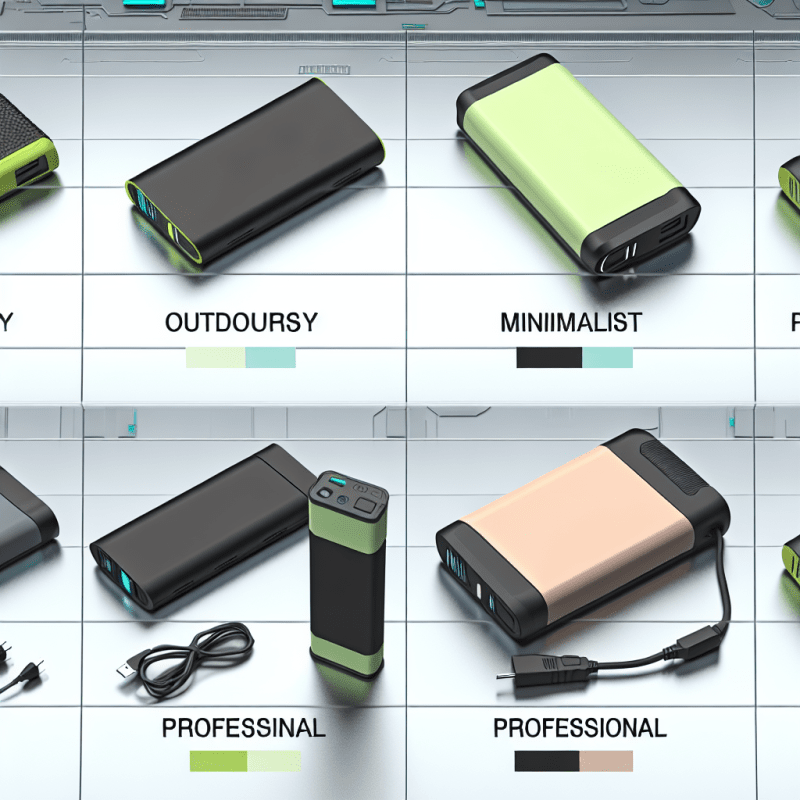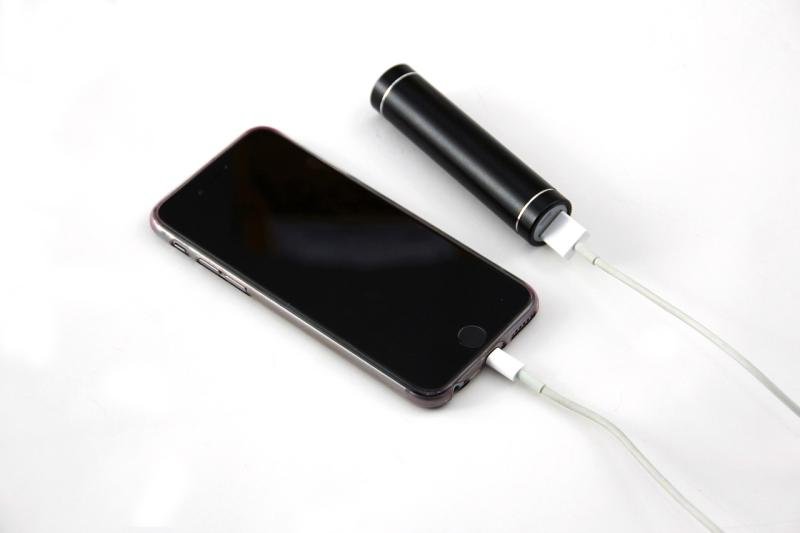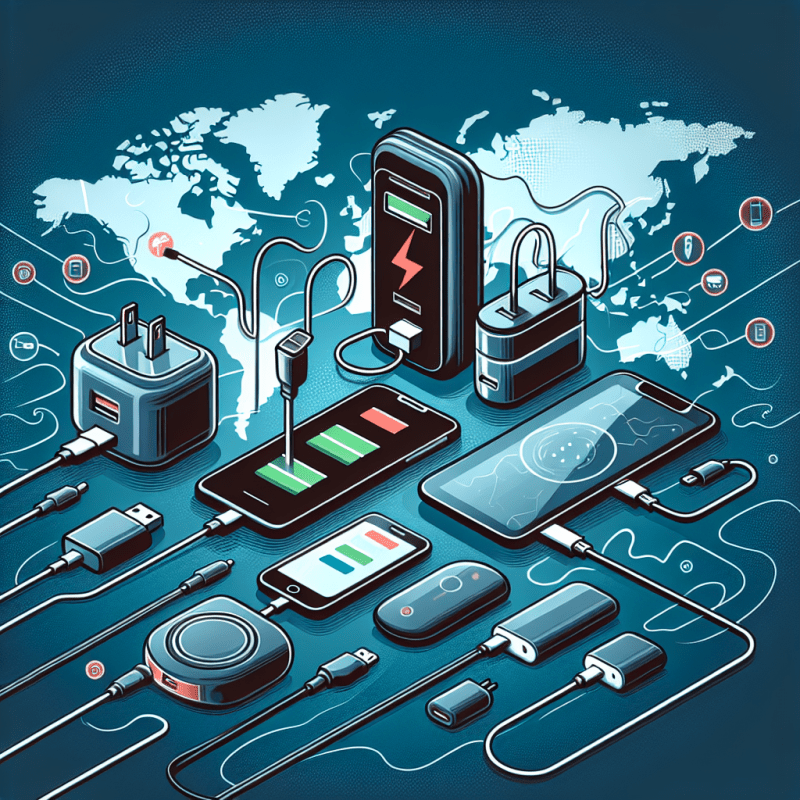The Emergence of Portable Charging: A Look at Early Innovations
The need for portable charging solutions began to arise in the early days of electronics. As mobile devices such as cell phones and laptops became more prevalent, the importance of being able to recharge these devices on the go grew increasingly important.
In the late 1990s, the first portable chargers began to emerge. These early models were often bulky and had limited charging capabilities, but they represented an important step forward in the development of portable charging technology. Many of these early chargers were designed for use with specific devices, and were not able to charge a wide range of products.
One of the earliest portable chargers was the Ring PowerPack, which was released in 1997. This device was designed specifically for use with the Nokia 6110 cell phone, and could provide up to 40 minutes of talk time or 20 hours of standby time. The PowerPack was a small, sleek device that could easily fit in a pocket or purse.
Another early portable charger was the Sanyo Eneloop KBC-L2, which was released in 2008. This device was designed to charge a wide range of electronics, including cell phones, cameras, and laptops. It could provide up to 240 minutes of talk time or 13 hours of laptop use, and featured a compact, lightweight design.
Today, portable charging solutions are more advanced than ever before. Modern portable chargers can charge a wide range of devices, and have longer battery life and faster charging capabilities than their early predecessors. Portable chargers are now an essential part of everyday life, allowing us to stay connected and charged up no matter where we are.
Portable Charger Pioneers: How Early Adopters Shaped the Technology
In the early days of portable charger technology, a small group of enthusiastic early adopters played a crucial role in shaping the devices we rely on today. These pioneers were tech-savvy individuals who recognized the need for a more convenient way to charge our devices on the go, and they helped to pave the way for the widespread adoption of portable chargers.
The first portable chargers were bulky, heavy, and expensive, but that didn't deter these early pioneers. They recognized the potential of the technology and were willing to invest their time and money in developing and refining it. Some of the key ways that early adopters influenced the development of portable charger technology include:
1. Improving Efficiency
One of the biggest challenges facing early portable charger pioneers was developing a device that was both powerful enough to charge our devices and efficient enough to be practical. The first portable chargers were often slow and inefficient, with low capacity batteries that took hours to charge.
Early adopters worked tirelessly to improve the efficiency of portable chargers, experimenting with various battery technologies and charging methods. They also developed new ways to optimize power usage, incorporating features like sleep modes and automatic shutoffs to conserve energy.
2. Increasing Portability
Another challenge facing early portable charger pioneers was creating a device that was truly portable. The early chargers were often bulky and heavy, making them difficult to carry around. Early adopters recognized the need for a more lightweight and compact design and began experimenting with new materials and form factors.
As a result, we now have a wide variety of lightweight and highly portable chargers that can easily fit into a pocket or backpack.
3. Innovating with New Features
Finally, early adopters played a crucial role in developing new features for portable chargers that we take for granted today. From fast charging to wireless charging and even solar panels, early adopters were always exploring new ways to make portable charging more convenient and powerful.
Today, we have a wide range of portable chargers with a variety of features, from ultra-fast charging speeds to built-in flashlights and even Bluetooth speakers.
Conclusion
Without the efforts of these early portable charger pioneers, the devices we rely on to keep our phones, laptops, and other gadgets charged on the go might not exist in their current form. Their tireless innovation and experimentation laid the groundwork for a thriving industry that is still evolving today, and we owe them a debt of gratitude for their contributions to portable charger technology.
The Evolution of Portable Power: Modern Perspectives on Mobile Charging Technology
With the rapid advancements in technology, there has been a tremendous evolution in portable power and mobile charging technologies. The advent of powerful, high-capacity batteries and the miniaturization of electronics has allowed for the creation of a plethora of portable power solutions that are increasingly reliable, efficient, and convenient.
One of the most popular portable power solutions today is the power bank. These small, pocket-sized devices are equipped with lithium-ion battery cells, which provide users with the ability to recharge their smartphones or other USB-powered devices while on the go. Power banks have become an essential tool for many users who rely heavily on their mobile devices for work, communication, and entertainment.
Another significant advancement in portable charging technology is wireless charging. This technology uses electromagnetic induction to transmit energy wirelessly to a device. With the introduction of the Qi wireless charging standard, many devices come with built-in wireless charging capabilities, eliminating the need for cables and adapters altogether.
Solar-powered chargers are also becoming increasingly popular, especially among outdoor enthusiasts and travelers. These devices use photovoltaic cells to convert sunlight into energy, which can then be used to charge USB-powered devices. While solar power may not be as reliable or efficient as traditional charging methods, it remains a sustainable, eco-friendly option for those who spend a lot of time outdoors.
In recent years, fast charging has also emerged as a major trend in mobile charging technology. With new technologies such as Qualcomm's Quick Charge and USB Power Delivery, users can now charge their devices at significantly faster rates than ever before. Fast charging has become a critical feature for many users who are constantly on the move and need to top up their devices quickly.
In conclusion, the evolution of technology has enabled the development of various portable power solutions that cater to the diverse needs of mobile device users. From power banks to wireless charging, to solar-powered options and fast charging, there are many ways to keep your device charged and ready to go. As we continue to rely more and more on our mobile devices, portable power solutions will remain an essential tool for modern life.



